Brake Vias Regulator: Enhance Your Vehicle's Performance and Safety
Brake vias regulators are essential components in automotive braking systems. They help manage brake pressure distribution between the front and rear wheels, improving vehicle stability and control. Understanding the different types of brake vias regulators and their applications is crucial for optimizing braking performance. This article provides insights into their functionality, importance, and how to select and maintain them effectively.
Understanding Brake Vias Regulators
The brake vias regulator is a crucial component for optimal brake performance in automotive systems. Understanding its definition, different operating principles, and functionality can enhance vehicle handling and safety.
Definition and Key Components
This device allows for the efficient modulation of brake pressure across different wheels of a vehicle. The primary components include:
Pressure Modulation Valve: Adjusts the pressure applied to each wheel.
Actuator Mechanism: Responds to the driver’s braking input.
Connection Lines: Facilitate the flow of brake fluid to the wheels.
Adjustment Knobs: Enable fine-tuning of brake bias for various conditions.
Mechanical vs. Hydraulic Principles
Understanding the operating principles is essential for effective brake system design. Mechanical systems rely on physical components to manage brake pressure, utilizing levers and springs. In contrast, hydraulic systems leverage fluid dynamics, allowing for smoother and more responsive braking. The key differences include:
Response Time: Hydraulic systems generally offer faster response due to liquid incompressibility.
Control: Mechanical systems may be limited in fine adjustments compared to hydraulic systems.
Maintenance: Hydraulic systems may require more upkeep to prevent leaks and ensure fluid integrity.
How Pressure is Modulated in Brake Systems
The modulation of brake pressure is crucial to achieving balanced braking performance. When the driver presses the brake pedal, a series of hydraulic pumps generate pressure. This pressure is then directed to the various valves, where it is controlled to ensure precise force distribution across the wheels. Key factors in pressure modulation include:
Brake Fluid Properties: The choice of brake fluid affects pressure transfer efficiency.
Valve Settings: Adjustable valves allow for customized pressure distribution based on specific driving conditions.
Temperature Variations: Changes in temperature can influence fluid viscosity and, consequently, pressure modulation.
Importance of Brake Bias and Proportioning
Effective brake bias and proportioning are crucial elements in ensuring driver control and stability in various driving conditions. Properly adjusted, they enhance vehicle performance significantly.
Role of Brake Bias in Vehicle Stability
Brake bias refers to the distribution of braking force between the front and rear wheels of a vehicle. Achieving the right balance is essential for maintaining stability during hard braking scenarios. When brake bias is optimized, it allows for even weight distribution across the vehicle.
This balanced distribution aids in preventing issues such as wheel lock-up or excessive rear wheel slide, which can lead to loss of control. A vehicle with correct brake bias can corner better and respond more predictably, particularly during competitive racing or emergency maneuvers. In summary, the role of brake bias is fundamental in enhancing overall vehicle dynamics.
Adjusting Rear Brake Pressure for Performance
Fine-tuning rear brake pressure is a critical aspect of achieving desired vehicle handling. By adjusting the rear bias, drivers can influence how the car responds to braking inputs.
Increased rear brake pressure improves stopping power, especially in performance driving contexts.
Reducing rear brake pressure can help prevent oversteer, particularly in rear-wheel-drive vehicles during sharp turns.
Adjustments are often necessary based on track conditions, tire grip, and vehicle load.
Drivers often utilize adjustable proportioning valves to modify rear brake pressure, allowing for quick changes tailored to specific race scenarios. Understanding this relationship provides a competitive edge on the track.
Effects of Improper Brake Bias on Safety and Control
When brake bias is not properly set, it can lead to several safety concerns. An uneven distribution of braking force may result in longer stopping distances. This imbalance can compromise vehicle control, particularly in critical driving situations.
Excessive Front Bias: Leads to brake fade and can cause the rear wheels to lift, adversely affecting steering control.
Excessive Rear Bias: Increases the risk of rear-wheel lock-up, often resulting in a loss of traction and potential spin-outs.
Feathering of Brakes: Drivers may experience inconsistent braking, where the vehicle feels unstable and unpredictable.
Recognizing and correcting improper brake bias is vital. Regular checks and adjustments based on driving conditions will help ensure safety and optimal vehicle performance on the track or road.
Types of Brake Vias Regulators and Valves
Brake vias regulators and valves come in various types tailored to different driving preferences and vehicle requirements. Understanding these options aids in selecting the right regulator for optimal braking performance.
Adjustable Proportioning Valves
These valves allow for fine-tuning of brake balance between the front and rear axles, enhancing vehicle control and stability. Various designs cater to specific needs and preferences.
Screw Type Brake Bias Valves
Screw type valves are designed to provide simple, manual adjustments of brake bias. They feature a threaded knob that, when turned, changes the pressure distribution between the front and rear brakes. This type is especially beneficial for drivers who prefer hands-on control during races or track days.
Lever Type Adjustable Regulators
Lever type regulators offer a mechanical approach for adjusting brake bias. The lever can be easily repositioned during drives, allowing for quick adaptations to track conditions. This flexibility can prove beneficial in varying racing scenarios, as drivers may need to adjust their braking balance on the fly.
Universal Valves for Different Car Models
Universal valves are designed to fit a broad range of automotive makes and models. They serve as versatile options for those modifying vehicles, as they can be installed without requiring specific vehicle compatibility. Such regulators often feature adjustable settings to accommodate various driving preferences.
Specialized Valves for Rally and Racing Applications
A range of specialized valves exists for use in competitive environments like rallying and circuit racing. These valves are engineered to perform under extreme conditions, providing consistent pressure modulation where it matters most.
Wilwood Brake Regulators and Their Features
Wilwood offers a variety of brake regulators known for their quality and reliability in high-performance contexts. Notable features of Wilwood regulators include:
Customizable pressure levels to suit different racers’ needs.
Lightweight construction that doesn’t compromise performance.
Durability, designed to withstand the rigors of competitive racing.
These regulators exemplify cutting-edge hydraulic engineering, ensuring optimal braking efficiency and safety during intense driving conditions.
Selecting the Right Brake Parts for Your Setup
Choosing the appropriate brake components is crucial for optimizing vehicle performance. Several key factors must be considered to ensure compatibility, durability, and functionality in various driving conditions.
Compatibility with Master Cylinders and Pedal Boxes
The first consideration when selecting brake parts is their compatibility with existing master cylinders and pedal boxes. An incorrect match may lead to inadequate performance or even system failures. It is essential to determine:
The specific make and model of the vehicle.
The dimensions and specifications of the master cylinder.
Type of pedal box being utilized, including its actuation method.
Ensuring that components work seamlessly together increases reliability during operation, particularly in high-performance scenarios.
Materials and Durability in Harsh Conditions
Durability is paramount for brake components, especially under extreme conditions seen in motorsports or aggressive driving. Key materials used in brake parts include:
Aluminum: Lightweight and corrosion-resistant, ideal for minimizing overall vehicle weight.
Stainless Steel: Provides strength and robustness, particularly for critical connection points.
High-Temperature Composites: Suitable for performance applications where heat build-up can be significant.
Choosing materials that can withstand heat, vibrations, and corrosive elements will prolong the lifespan of the brake system.
Pressure Range Considerations (PSI Levels)
When it comes to performance, understanding the pressure limits is essential. Different setups require various pressure ranges, which can be determined by:
Vehicle type and weight.
Driving style and track conditions.
Advanced tuning needs that may arise in competitive scenarios.
Selecting parts that accommodate the necessary PSI levels ensures that the braking system engages effectively without risking failure.
Inline Brake Valves vs. Combination Valves
Choosing between inline brake valves and combination valves depends on the braking strategy and vehicle configuration. Each type offers distinct advantages:
Inline Brake Valves: Provide straightforward control and are easy to integrate within existing systems. Ideal for simpler setups.
Combination Valves: Merge several functions, including proportioning and metering, into one unit. These valves offer versatility and are beneficial for complex braking systems.
The right choice affects both performance and the ease of maintenance, influencing how well the braking system operates under various conditions.
Installation and Adjustment Techniques
Proper installation and adjustment techniques are crucial for ensuring optimal performance of brake vias regulators. This section discusses the essential methods for installing and adjusting these components efficiently.
Standard 1/8 NPT Connections and Fittings
Utilizing standard 1/8 NPT connections is an industry norm, simplifying the integration of brake vias regulators into existing systems. The 1/8 NPT size allows for compatibility with most brake lines and fittings commonly found in many vehicles. When preparing for installation, ensuring that the connections are clean and free from any debris is necessary. A proper seal is essential to avoid leaks, which can compromise braking effectiveness.
Step-by-Step Installation Guide
To facilitate a successful installation of brake vias regulators, following a clear step-by-step procedure is beneficial. Here is an outline of the installation process:
Gather Tools and Parts: Collect all necessary components including the brake regulator, appropriate fittings, and tools like wrenches and screwdrivers.
Circuit Preparation: Before installation, ensure the brake lines are depressurized and drained to prevent fluid spills.
Mounting the Regulator: Secure the regulator in a suitable location within the vehicle, ensuring it is accessible for future adjustments.
Connecting Lines: Attach the brake lines to the regulator's inlet and outlet ports, tightening the fittings securely to prevent leaks.
Testing Connections: Once connected, fluid should flow through the system without obstructions. Conduct a pressure test to confirm no leaks are present before proceeding.
How to Adjust the Proportion Valve Knob
Adjusting the proportion valve knob is a straightforward yet critical part of the installation. This knob helps modulate the brake pressure between the front and rear brake systems. To make adjustments:
Identify the Knob: Typically located on the regulator itself, this knob should be easily accessible once installed.
Set Initial Pressure: Turn the knob to the recommended starting position, which can usually be found in the product specifications.
Test Drive: After initial adjustments, take the vehicle for a test drive to assess braking performance. Be prepared to make additional adjustments based on feel.
Fine-Tune: Continue to adjust gradually while performing test drives until the desired brake balance is achieved.
Adjusting Rear Brake Bias for Different Track Conditions
Adjusting rear brake bias is essential for optimizing performance under varying track conditions. Factors such as track surface, weather, and vehicle load affect braking dynamics. To adapt to these factors effectively:
Slick Conditions: Increase rear brake pressure to enhance grip and prevent wheel lockup, which is crucial on wet or slippery surfaces.
Bumpy Terrain: Decrease rear bias to allow for better vehicle control and reduced risk of losing traction on uneven ground.
Variable Weather: In changing weather conditions, be prepared to make quick adjustments to the bias to maintain consistent braking performance.
Maintenance and Troubleshooting
Proper maintenance and timely troubleshooting are essential for ensuring the reliability and effectiveness of brake vias regulators. Regular checks can prevent issues that may compromise vehicle safety and performance.
Regular Inspection of Valve Screws and Knobs
Routine inspections of valve screws and knobs ensure that they are secure and functioning as intended. A loose screw can lead to malfunctions in the brake system, affecting the modulation of pressure.
Check for any visible signs of wear or damage.
Ensure screws are tightened to the manufacturer’s specifications.
Examine knobs for smooth operation and absence of sticking.
Addressing these inspections promptly can prevent costly repairs and maintain optimal performance during critical braking situations.
Cleaning and Preventing Brake Fluid Leaks
Brake fluid leaks can significantly impact the performance of the braking system. Regular cleaning of the regulator and surrounding components is crucial to prevent fluid accumulation, which can lead to corrosion and other problems.
Use a suitable cleaning solution to remove debris and brake dust.
Examine hoses and fittings for signs of wear or damage that could lead to leaks.
Replace any worn or damaged components promptly.
Implementing these cleaning practices will enhance the longevity of the brake system and maintain consistent performance over time.
Diagnosing Issues with Brake Pressure Regulation
Identifying issues with brake pressure regulation can prevent failures in critical braking scenarios. Symptoms like uneven braking or a spongy pedal feel may indicate problems with the regulator.
Begin by checking for inconsistencies in brake pressure between the front and rear wheels.
Inspect the regulator for any physical issues, such as cracks or improper installation.
Evaluate brake fluid levels and look for any leaks that could affect pressure.
Tackling these diagnostic steps can reveal underlying issues that might require adjustments or part replacements.
When to Replace Brake Vias Regulators
Recognizing when to replace brake vias regulators is crucial for maintaining safety and performance. Over time, wear and tear can compromise their effectiveness, prompting the need for replacement.
Consider replacing the regulator if there is visible damage or corrosion.
Replace it if repeated inspections indicate continuous problems with pressure modulation.
Be attentive to performance drops, such as reduced responsiveness during braking.
Staying proactive about the condition of brake vias regulators ensures that the braking system remains reliable under all circumstances, especially in high-performance scenarios.
Application in Motorsports
The use of brake regulators in motorsports is crucial for achieving optimal performance and safety. They allow for fine-tuning of braking systems, which is essential in competitive environments where precision is key.
Using Brake Regulators in Rally Races
In rally racing, drivers face a variety of terrains and conditions. Implementing a brake regulator enables them to adjust the braking force dynamically as they navigate through sharp turns and uneven surfaces. This adaptability ensures that the vehicle maintains traction and stability, which is vital during high-speed maneuvers.
Benefits for Touring Car and Circuit Racing
The integration of brake regulators in touring cars and circuit racing is equally significant. Crucial factors include:
Enhanced Control: Drivers can modify the brake bias to suit track conditions, ensuring better handling and cornering.
Consistent Performance: Keeping brake performance stable across multiple laps enhances the vehicle's predictability.
Improved Safety: In high-stakes races, being able to fine-tune brake pressure helps prevent rear-wheel lockup and maintains vehicle stability.
Integration with Racing Pedal Boxes and OBP Motorsport Systems
Brake regulators can be seamlessly integrated with specialized racing pedal boxes, such as those from OBP Motorsport. This integration allows for more responsive braking actions and facilitates easier adjustments during races. Utilizing these components, drivers can ensure their vehicle is set up specifically for the demands of their particular racing scenario.
Optimizing Brake Performance on Disc and Drum Brake Systems
Whether using disc or drum brakes, the objective remains clear: optimizing braking performance. When tuning a racing vehicle, understanding how different brake systems interact with regulators is essential. Factors to consider in this area include:
Brake Material: Choosing the right brake pads and discs influences overall stopping power and heat management.
Pressure Distribution: Properly managing brake pressure helps to balance the system, which is vital for maintaining control during aggressive driving.
Track Conditions: As surface conditions vary, so too should the adjustment of the brake regulator to ensure maximum performance.
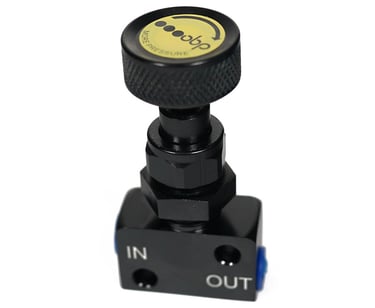



Frequently Asked Questions About Brake Vias Regulators
This section addresses common queries regarding brake vias regulators, their functionality, and their importance in automotive performance. Here's a look at some of the most frequently asked questions.
What Is the Difference Between a Bias Valve and a Proportioning Valve?
Understanding the distinction between a bias valve and a proportioning valve is crucial for optimizing braking systems. A bias valve primarily alters the distribution of brake pressure between the front and rear brakes. It ensures that the braking force is balanced, enhancing stability during stops. In contrast, a proportioning valve adjusts the braking force based on driving conditions and vehicle dynamics, often modulating pressure to the rear brakes as weight transfers during braking.
How Much Pressure Should I Apply for Rear Brake Bias?
The pressure applied to rear brake bias is fundamental in achieving optimal vehicle performance. Typically, manufacturers recommend a specific pressure range based on vehicle specifications. However, a general guideline is to start around 60-70% of the front brake pressure and adjust from there based on driving feedback and track conditions. This can differ significantly depending on vehicle weight distribution and usage scenarios, particularly in motorsports.
Can I Install an Adjustable Proportioning Valve Myself?
Installing an adjustable proportioning valve is a task that many vehicle enthusiasts can undertake themselves, provided they have basic mechanical skills. Most adjustable valves come with standard fittings, simplifying the process. It is essential to follow manufacturer instructions meticulously to ensure proper installation and avoid issues that could compromise safety and brake performance.
What Are the Signs of a Failing Brake Pressure Regulator?
Identifying the symptoms of a failing brake pressure regulator is crucial for maintaining vehicle safety. Common signs include:
Uneven brake performance between the front and rear brakes.
Increased stopping distances or decreased responsiveness.
Fluid leaks around the regulator.
Inconsistent brake pedal feel; for example, sponginess or a hard pedal.
Addressing these issues promptly can prevent further damage and ensure optimal braking efficiency.
Which Valve Type Is Best for My Racing Setup?
Selecting the appropriate valve type for a racing setup hinges on various factors including vehicle weight, intended use, and personal driving style. Adjustable proportioning valves are often recommended as they allow drivers to modify bias according to racetrack conditions. Common options include:
Screw-type brake bias valves, which offer precise adjustment.
Lever type adjustable regulators that allow quick changes during races.
Universal valves that provide flexibility across various vehicle platforms.
Depending on the specific requirements, the choice may also involve consulting with experienced racers or mechanics to ensure that selected parts align with overall performance goals.
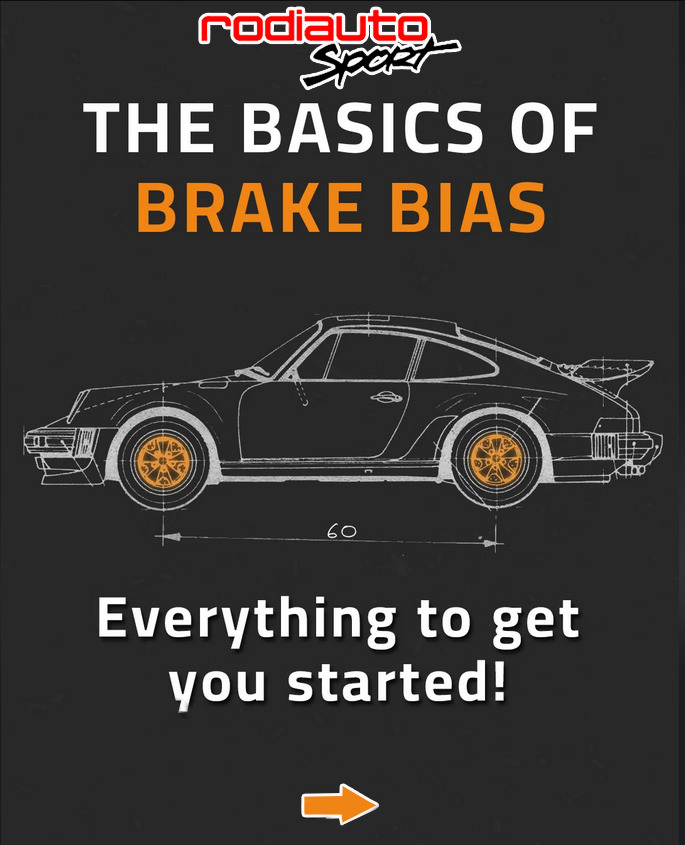

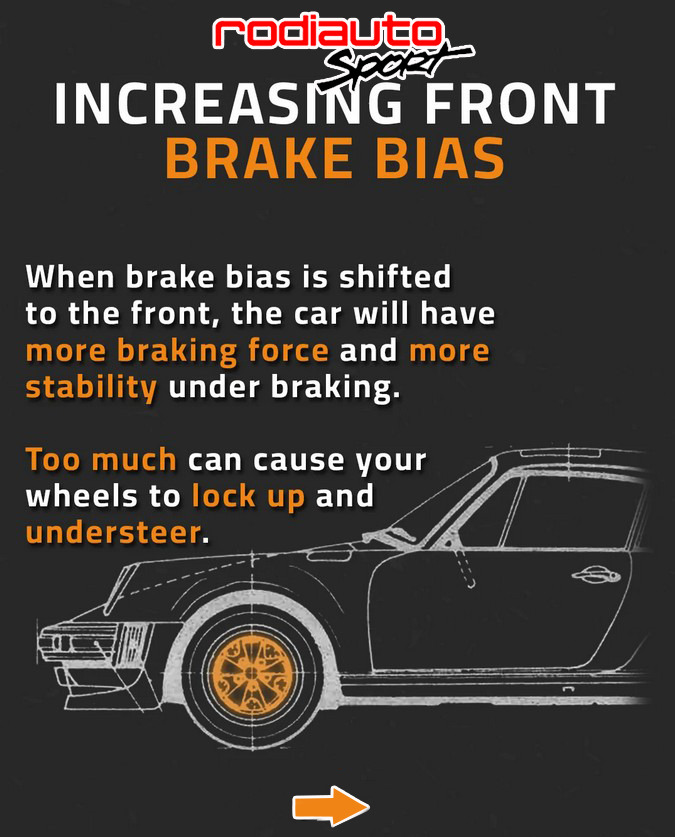

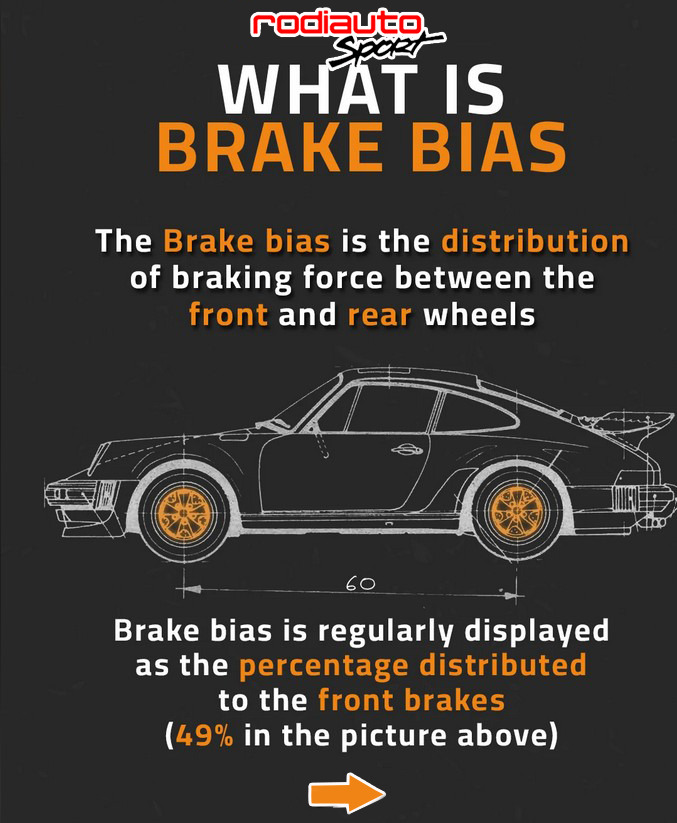

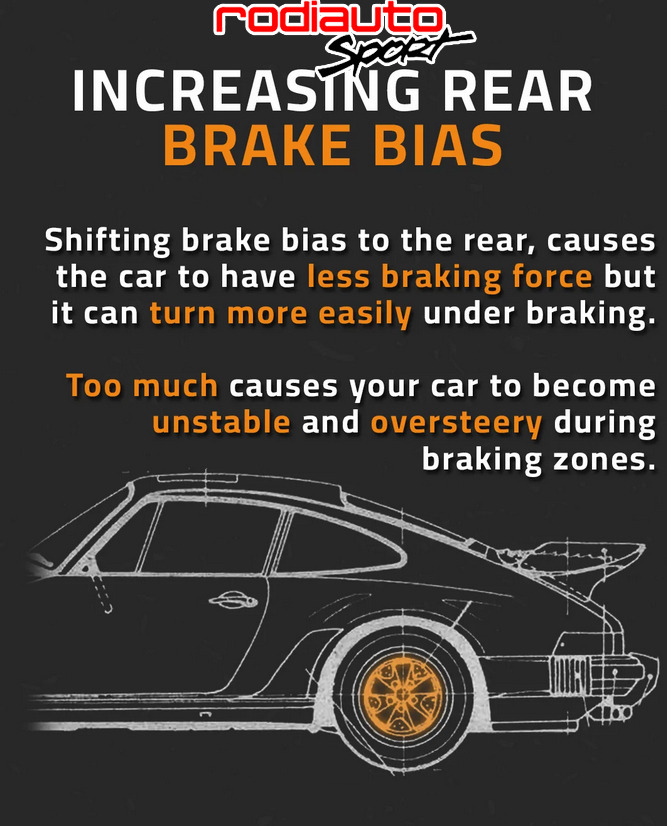

Motorsport
Experience exceptional racing with our expert guidance.
Rodiauto Sport LLC
500 4TH ST NW Suite 102
87102 Alburquerque - NM - US.
Advice
Services
info@rodiautosport.us
© 2025. All rights reserved.
